|
|
|

Suited for bonsai culture.
|
Description: Succulent or
sub-succulent multi-trunked shrublet with a definite summer
dormancy. Suited for bonsai culture.
Stem: Very compact, grey-green, glaucous or brown, woody twisted
branching and microscopically pubescent.. The stems will grow
up to three
centimetres in diameter. The whole plant can reach 40-50 centimetres
in height, with a 50-60 cm crown of foliage.
Bark: brown, smooth.
Leaves: Small pinnately compound, divided (dissected), hirsute
with glandular hairs interspersed at the ends of the stems.
Lamina
oblong, 20-60x10-20 mm, pinnae with rounded apices, stipules triangular,
1x1-1.5 mm, initially persistent, finaly deciduous. Scented, with the
scent varying from clone to clone, varying from apple to soap to various
indescribable and unpleasant odors.
The oils that give the scent keep
most grazing animals from eating the leaves. Mostly leafless in fall
when flowers show up
|
|
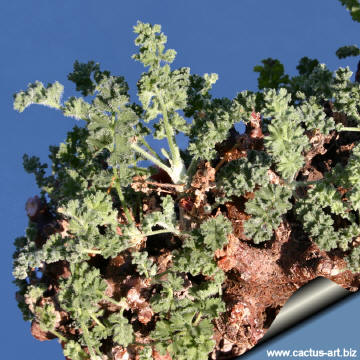 |
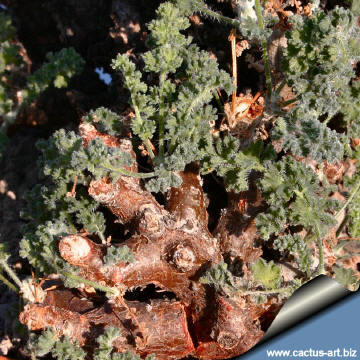 |
|
Flower: Night scented.
White pink with 5 red anthers, and usually produced in clusters of up to
four on an unbranched flowering branch. The inflorescence has smaller
foliar leaves, bears pseudoumbels and is non persistent. Peduncle
1.8-5 mm. Sepals 5, lanceolate, 1.5-2x7 mm, reflexed. Hypanthium 5-9 mm.
|
|
 |
Cultivation: Water from early February to late April, then from
early August to late November, at a minimum temperature of +14° C.
Keep
completely dry in summer and winter, at a mininimum temperature of +8°
C. Protect from frost. Pelargonium alternans in cultivation is usually
so overwatered and overfertilized that it is hardly recognizable as the
species that it is. Correctly grown, this is a beautiful, compact and
dense plant. It does best with a mix that has almost no organic material at
all. Perlite can be substituted for pumice, but it tends to rise to the
surface of the mixture.
Heat Tolerance: Light shade or morning sun in summer. Sun Exposure:
Light shade
|
|
Reproduction: There are two main ways to propagate members of the
genus Pelargonium. Plant seeds any time of the year, but a spring or
autumn sowing of seeds is usually most successful.
Rooting cuttings of
stems is another method. Germination can be very erratic, and can take
place over a long period of time. There is a way of overcoming the long
time periods and the inhibitors; that is, by scarifying the seeds.
|
|


Advertising
|
|
|
|
Family: Geraniaceae
|
|
Scientific name:
Pelargonium alternans Wendl.
Hort. Herrenh. 1, t. 10 (1798/88?) 14.
Origin: It comes from the southern part of South Africa
(western and southern parts of south-western Cape Province)
Habitat: Grows in dry areas in
well-drained soil, with some water and some sun. Very drought tolerant.
Conservation status: Listed in
CITES appendix 2.
|
Synonyms:
- Pelargonium
alternatim-pinnatum Wendl. ex Steud.
- Pelargonium coralinum (Eckl. &
Zeyh.) Steud.
- Pelargonium microphyllum (Eckl. &
Zeyh.) Steud.
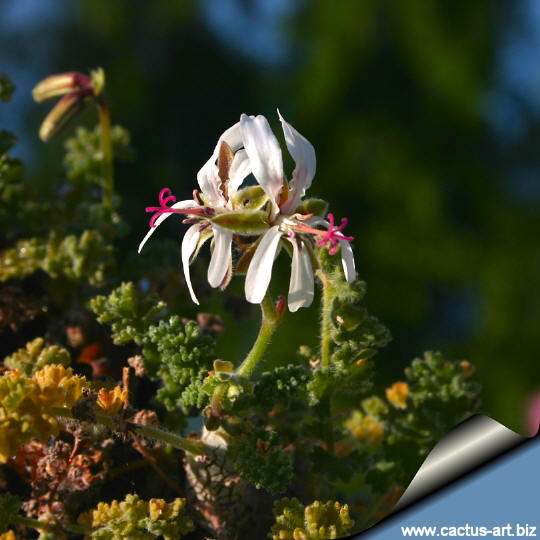
|
|
|
|
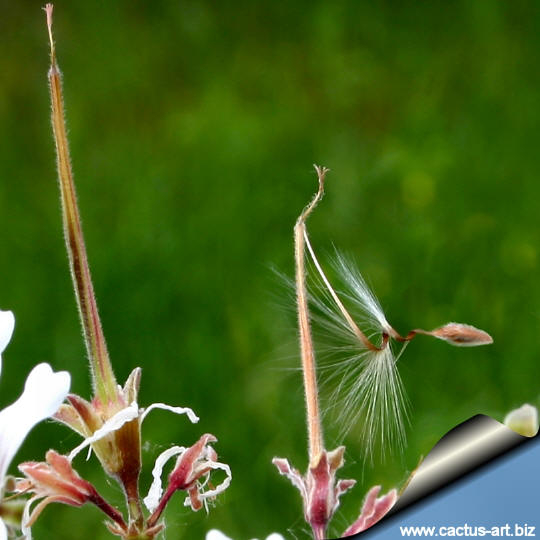
Fruit and a winged seed.
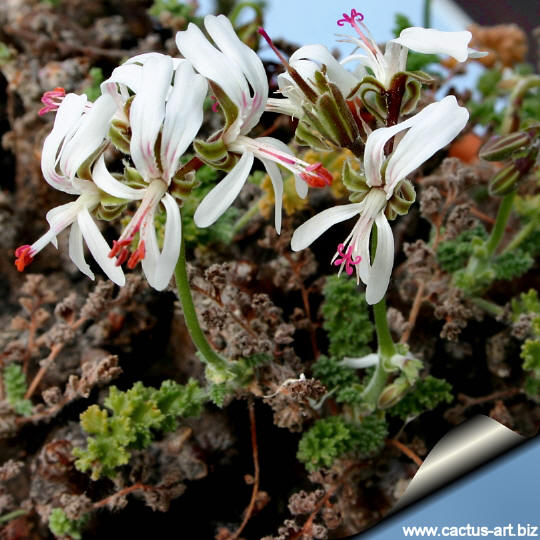 |
|